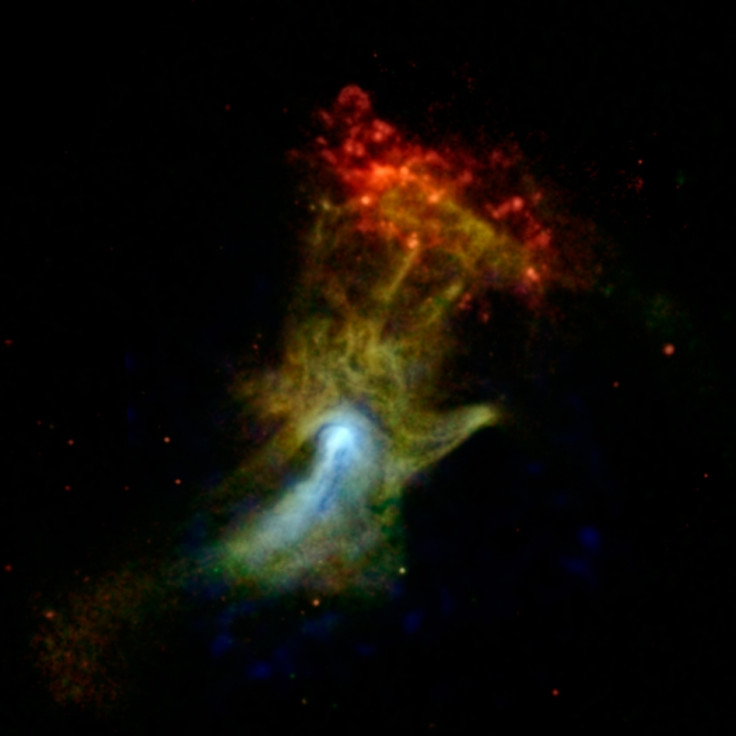Nasa's Spots 'Hand of God' in Exploded Star 17,000 Light Years Away

Nasa has photographed the "Hand of God" through its Nuclear Spectroscopic Telescope Array (NuStar) 17,000 light-years away in the southern constellation Circinus.
The image shows what appears to be a left hand grasping at space material that has been coloured red.
While it may appear to look like the Hand of God, Nasa scientists say it is actually a cloud of material ejected from an exploded star.
The hand was first detected by NASA's Chandra X-ray Observatory in 2009, when it was described as a "small, dense object only 12 miles in diameter". It is a very young and powerful pulsar known as PSR B1509-58, or B1509 for short.
It is a neutron star that is spinning very fast and spewing energy out into space to create its complex structures – including the cosmic hand.
Astronomers believe B1509 has an intense magnetic field – around 15 trillion times stronger than the Earth's magnetic field.
The finger-like structures extend to the north and the transfer of energy from the wind makes them glow brightly in X-rays.

Nasa's new image of the Hand of God is the first time it has been pictured in high-energy X-rays. The hand is shown in blue, while the lower-energy light previously detected is shown in green and red.
"These particles are interacting with magnetic fields around the material, causing it to glow with X-rays," Nasa said. "The result is a cloud that, in previous images, looked like an open hand. The pulsar itself can't be seen in this picture, but is located near the bright white spot."
The mystery as to why the pulsar particles interact with the material so it looks like a hand has been solved, in part, by the new image.
"The northern region, where the fingers are located, shrinks more than the southern part, where a jet lies, implying the two areas are physically different.
"The red cloud at the end of the finger region is a different structure, called RCW 89. Astronomers think the pulsar's wind is heating the cloud, causing it to glow with lower-energy X-ray light."
© Copyright IBTimes 2025. All rights reserved.






















